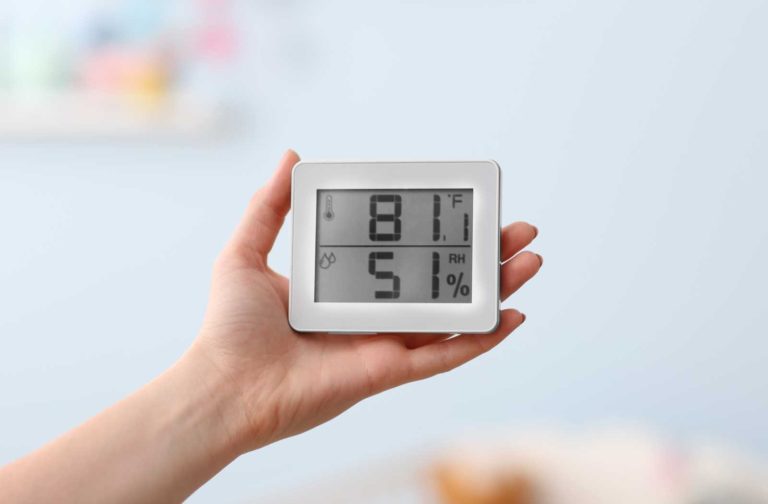Home Humidity 101: How Humid Should Your Home Be?
Because of the Great Lakes, southern Ontario, including Scarborough and the Greater Toronto Area, experience a lot of humidity. Humidity can make a summer or a winter more temperate, but it can also affect your home comfort.
Mersey technicians have been maintaining HVAC systems for more than 45 years, so we’ve learned what can happen when your home is too humid. Read on to discover the impact of humidity indoors and what you can do to optimize your home’s humidity!
Impact of Humidity on Homes
Balance is key when it comes to indoor humidity. We recommend 30-33% humidity for homes in Scarborough and the GTA. As you might know, 100% humidity means there’s so much water vapour in the air that it starts precipitating, i.e. raining. So if the air in your home is only 33% of the way to that point, you’re in the goldilocks zone.
In Scarborough and the GTA, average outdoor humidity throughout the year is 81% in the morning and 61% in the afternoon. The interior of your home has a lot of wood, drywall, aluminum, and cloth. These parts of your home need humidity lower than that point to last long in good condition.
High Humidity
You might be tempted to open the windows for long periods in the summer, since common sense tells us that might provide some relief. But the humidity outside is generally too high, because the interior of the home can absorb the water vapour in the air over time. So there’s a slow water damage effect to letting humid outdoor air inside.
There are risks to your health as well as your home. Given enough time, moist air, and a surface to grow on, toxic mold can flourish when indoor humidity remains in excess of 50%.
Staying inside where humidity is too high can cause numerous health problems including difficulty breathing, asthma attacks, respiratory infections, and allergic reactions. The risk of respiratory infections and allergies can be avoided by indoor humidity maintained at lower than 60%. While comfortable for some, more than 40% humidity can come with some problems.
Low Humidity
Have you ever noticed that the air in airplane cabins is very dry? Airplane cabins average 20% humidity because of the compression and heating process. Unlike homes, airlines can’t afford to carry water for humidifier use, so adding a humidifier component won’t raise the humidity to the optimal 30-33% range.
In the winter, heating air and sending it through your home’s ventilation has that same drying effect, resulting in lower humidity. Deficient humidity can dry out your eyes and cause nosebleeds; the WHO recommends nasal spray, chapstick, and glasses over contact lenses at humidity levels near 20%. Low humidity can also cause issues with wood flooring, paint, and wallpaper, causing them to crack and peel. A whole-home humidifier can help restore humidity in your home, particularly in the winter months.
What You Can Do

The experts at Mersey can provide whole-home humidity through your central HVAC system. During winter months, you can avoid deficient humidity due to your furnace by running the humidifier. You can set it for that optimal 30-33% level.
In the summer, you should continue to avoid all that humid air, keeping the windows closed as often as you can. If the heat is uncomfortable, air conditioning provides home-wide temperature relief, without letting in all that excess humidity. There’s also ductless air conditioners, which are ideal for individual rooms or homes without ducts.
Key Takeaways on Ideal Humidity Levels
While the body can be comfortable in the short term for humidity between 40-70%, interior wood, furniture, and fixtures can begin to warp or degrade faster at more than 40%. At more than 50% mold and mildew can take root in your home.
Under 20% you can get really dry eyes and nasal passages, and you have a greater risk of dehydration. If you run your furnace a lot in the winter, a humidifier is a great solution to adding humidity back into the air quality of your home, so you can enjoy home comfort in the coldest months of the year.







